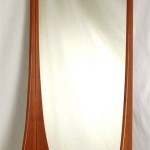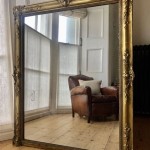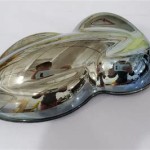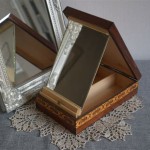What Is a Mirror Image Called?
A mirror image is referred to by several terms depending on the context. In everyday language, it's simply called a "reflection." However, in scientific and technical fields, more specific terms are used to describe the phenomenon and its properties. These include "specular reflection," "mirror reflection," and in some cases, "lateral inversion."
Specular reflection describes the mirror-like reflection from a smooth surface. This type of reflection occurs when light rays strike a surface and bounce back at a predictable angle. The angle of incidence, which is the angle between the incoming light ray and the surface normal (a line perpendicular to the surface), is equal to the angle of reflection, which is the angle between the reflected ray and the surface normal. This predictable behavior is what creates the clear, recognizable image we see in a mirror.
Mirror reflection is a more general term often used interchangeably with specular reflection. It specifically refers to the reflection that produces a virtual image, as seen in a typical mirror. A virtual image appears to be located behind the mirror's surface and cannot be projected onto a screen. This is in contrast to a real image, which can be projected onto a screen, like the image formed by a camera lens.
Lateral inversion is another term associated with mirror images, and it describes the apparent reversal of left and right in the reflected image. While the top and bottom of the object remain in the same apparent orientation, the left side of the object appears on the right side of the image, and vice versa. This phenomenon leads to the classic difficulty of reading text in a mirror.
The terms "enantiomer" and "chiral" are used in chemistry when discussing molecules that are mirror images of each other but cannot be superimposed. These molecules exhibit a property called chirality, a form of asymmetry. A simple analogy for chirality is a pair of hands. While left and right hands are mirror images, they cannot be perfectly aligned on top of each other – one is always a reversed copy of the other. This property is crucial in chemistry as enantiomers can have different biological activities despite having the same chemical composition.
In mathematics, the concept of reflection is formalized through transformations. A reflection transformation, or flip, reflects a figure over a line (in two dimensions) or a plane (in three dimensions). This operation creates a congruent image, meaning the image has the same size and shape as the original figure but is reversed. This concept is crucial in geometry and is used to understand the relationships between shapes and their properties.
In optics, the quality of a mirror image depends on the smoothness of the reflecting surface. A perfectly smooth surface produces a perfect specular reflection, whereas a rough or uneven surface leads to diffuse reflection. In diffuse reflection, light rays are scattered in many different directions, resulting in a blurred or indistinct image. This is why polished surfaces are essential for creating clear reflections.
The physics of reflection involves the interaction of electromagnetic waves (light) with the electrons in the reflecting material. When light strikes a surface, the electromagnetic field of the light interacts with the electrons in the material. These electrons oscillate and re-emit light waves, which are what we perceive as the reflected image. The properties of the material, such as its conductivity and refractive index, determine how light is reflected.
The perception of mirror images also has implications in psychology and neuroscience. The human brain processes the reversed image from a mirror, recognizing it as a reflection rather than a separate entity. This involves complex cognitive processes, including spatial reasoning and self-recognition, which are still being actively researched.
The term "mirror image" and its associated concepts have wide-ranging applications across different disciplines. From the everyday experience of looking in a mirror to the complex analysis of molecular structures and mathematical transformations, understanding reflection is crucial for interpreting the world around us.
The phenomenon of reflection has practical applications in numerous technologies. Mirrors are used in telescopes, microscopes, and cameras to manipulate and focus light. Reflective materials are also utilized in architecture for aesthetic purposes and to control light and heat within buildings. Furthermore, the principles of reflection are essential in the development of technologies like lasers and optical fibers, which are fundamental to modern communication and data transmission.
What Is A Plane Mirror Convex Called Diverging Why Quora

Convex Mirror Uses Of Definition Equation

Concave Mirror Image Formation Ray Diagrams Conditions Mechanism

Types Of Spherical Mirrors Geeksforgeeks

A Concave Mirror Is Known As
1 What Are These Spherical Parts Known As 2 Is A Convex Mirror 3 Concave Sarthaks Econnect Largest Education Community

Difference Between Concave Vs Convex Mirror The Engineering Knowledge

Concave Mirror Image Formation Ray Diagrams Conditions Mechanism
What Is The Role Of Aperture In A Spherical Mirror For Grade 10 Quora

Infinity Mirror Wikipedia








